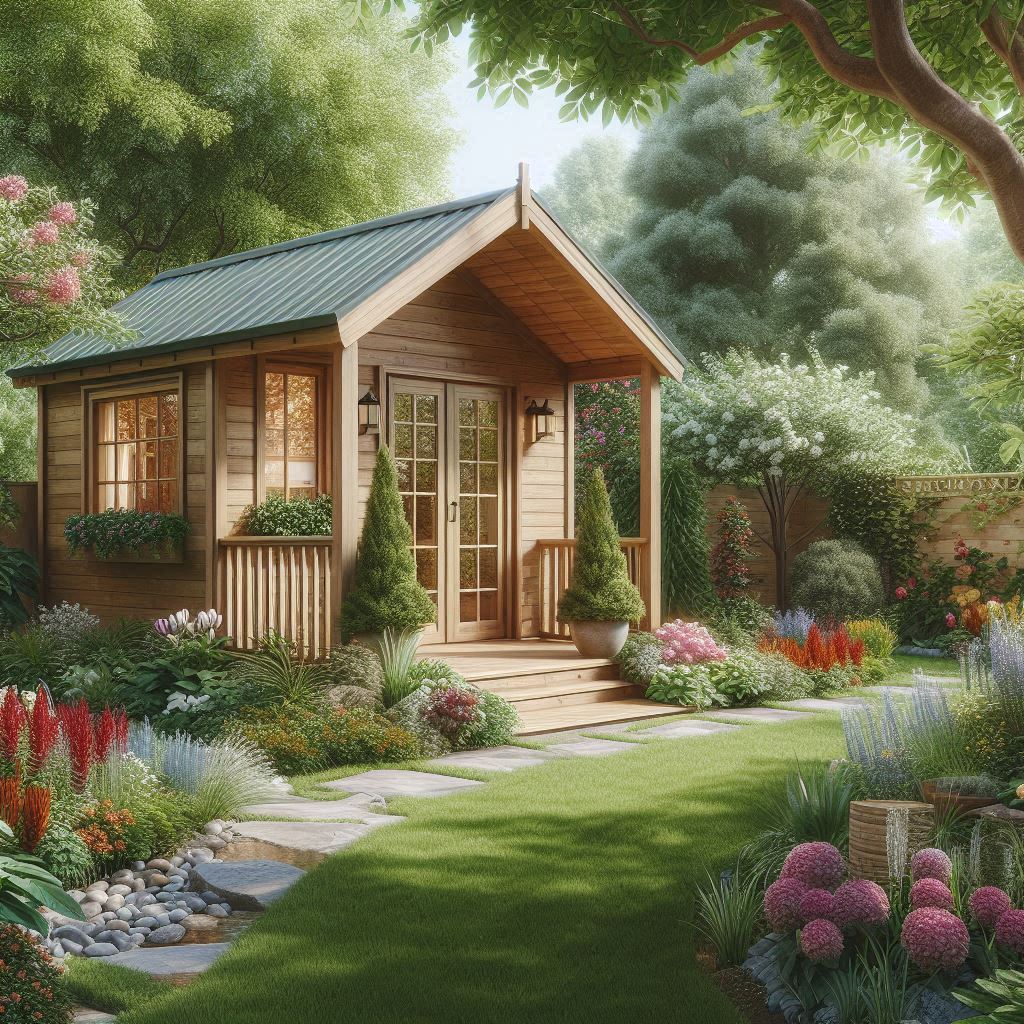
A shed isn’t just for storing tools or gardening equipment, it can be transformed into a functional workspace, a creative studio, or even a cozy retreat. Whether you’re starting from scratch or breathing new life into an old structure, this ultimate shed makeover guide will walk you through practical tips for building or renovating your outdoor shed:-
- Plan Your Project
Define Your Purpose
Before picking up a hammer or sketching out ideas, ask yourself: What will this shed become? A workshop, home office, art studio, or relaxation space? Your shed’s intended purpose will influence the design, layout, and features. Write down your goals and make a list of must-have elements.
Set a Budget and Timeline
Create a realistic budget that covers:
- Materials and tools
- Labour costs (if hiring professionals)
- Unexpected expenses (always include a contingency fund)
Establish a timeline with milestones, considering factors like weather conditions and delivery times for materials. A clear plan will keep your project organized and stress-free.
Research Regulations and Planning Laws
Depending on your location and the size of the structure, building or renovating a shed may or may not require planning permission. Check with your local County Council to ensure your project is compliant with all rules, and secure any necessary permissions before starting work.
- Design and Layout
Choose a Design That Suits Your Needs
Think about the following design elements:
- Size and Layout: Measure the space and plan the dimensions to ensure the shed will be functional for its new purpose.
- Natural Light: Incorporate windows or skylights to brighten the interior.
- Insulation and Ventilation: Essential for comfort, especially if you plan to spend a lot of time in the space. Consider energy-efficient windows and proper insulation materials.
- Power and Connectivity: Plan for electrical outlets, lighting, and possibly heating or cooling systems.
Draw Up Plans or Use Software
Sketch your ideas on paper or use digital design software to create detailed plans. Visualising your design helps identify potential issues and makes it easier to communicate your vision to any contractors or helpers involved in the project.
- Preparing the Site and Structure
Clear and Level the Area
An ideal shed location should be accessible and on level ground:
- Site Preparation: Clear out debris, vegetation, or old structures.
- Leveling: Ensure the ground is level to prevent future structural issues. Depending on the size of your shed, you might need to lay a concrete slab, gravel base, or use paving stones. It’s hard to beat a concrete slab though.
Evaluate the Existing Structure (For Renovations)
If you’re renovating an existing shed:
- Inspect for Damage: Check for rot, pests, or structural issues that need repair.
- Determine What to Keep: Decide which elements (like the frame or roof) can be salvaged and which need to be replaced.
- Reinforce Structure: Strengthen weak areas before adding new features or finishes.
- Construction or Renovation
Materials Matter
Choosing the right materials is key to a durable, attractive shed:
- Wood: Provides a classic, natural look but requires proper treatment to resist weathering and pests.
- Metal or Composite: These materials offer longevity and less maintenance, though they might limit customisation.
- Eco-Friendly Options: Reclaimed wood or sustainable composites can add character while being environmentally friendly.
DIY vs. Professional Help
Decide whether you’ll tackle the project yourself or hire professionals:
- DIY Projects: Perfect for those with some construction experience. Save money and customize every detail.
- Professional Contractors: Ideal for complex projects or when working with structural changes. Ensure you hire reputable professionals and check references and insurance etc.
Step-by-Step Renovation Tips
- Foundation and Framing: Start with a solid foundation. The floor should be elevated to prevent flooding. Reinforce or rebuild the frame as needed.
- Roofing: Inspect or install a new roof to prevent leaks. Consider adding insulation or a reflective surface to improve energy efficiency and reduce UV damage.
- Walls and Windows: Update or replace siding to enhance aesthetics and durability. Install windows to maximize natural light.
- Electrical: If your shed will be used frequently, install electrical wiring for outlets, lighting, and any necessary appliances. Consider ventilation systems or portable air conditioning/heating solutions.
- Flooring: Upgrade the flooring based on your shed’s purpose. Options include sealed concrete, laminate, or even carpet if insulation and moisture control are well-managed.
- Interior and Exterior Finishing Touches
Interior Décor and Organization
Make the space inviting and functional:
- Insulation and Paint: A well-insulated and freshly painted interior can make the space feel new and comfortable.
- Lighting: Use a mix of natural light and LED fixtures for energy efficiency.
- Storage Solutions: Install shelves, cabinets, or pegboards to keep tools, supplies, or creative materials organised.
- Personal Touches: Add decor that reflects your personality or the shed’s purpose, art, plants, or inspirational quotes.
- Kids’ Corner: If you have children, consider carving out a dedicated space just for them. Create a mini art station with a chalkboard wall for doodling, add playful murals, or set up a cozy reading nook. This special area can inspire their creativity and give them a unique spot to explore, learn, and make lasting memories.
Exterior Enhancements
Boost the visual impact of your shed:
- Siding and Trim: A fresh coat of weather-resistant paint or new siding can dramatically update the look.
- Landscaping: Surround your shed with plants, a pathway, or decorative stones. This not only enhances beauty but also integrates the shed into your garden.
- Lighting: Outdoor lighting can highlight architectural features and improve security.
- Roofing Trim: Consider adding gutters or decorative trim to give your shed a finished look.
- Maintenance and Upkeep
Regular Inspections
After your makeover is complete, keep your shed in top shape by:
- Checking for Weather Damage: Regularly inspect the roof, walls, and foundation.
- Cleaning Gutters and Windows: Prevent moisture build-up and maintain clarity.
- Updating Paint and Sealants: Refresh paint and reapply sealants as needed to protect against the elements.
Conclusion
The journey to building or renovating the perfect outdoor shed can be both exciting and rewarding. By carefully planning your project, designing a space that meets your needs, and executing practical renovation or building tips, you can transform an ordinary shed into a remarkable retreat or workspace. Remember, every shed makeover is unique, let your creativity and practical needs guide you, and enjoy the process of turning your vision into reality.
If you’re looking for help to build or renovate your kitchen, remember you can post your job on Tradesmen.ie and get a number of quotes from rated carpenters, electricians, builders and lots more. With a range of professions available, you’re sure to find the perfect fit for your project.
Best of luck creating the perfect garden shed!
Cheers
Oliver Dempsey
Tradesmen.ie
4 February 2025
General Tips for hiring a tradesman
Here are some tips to consider when hiring a tradesman:-
1. Ask for phone numbers of references so that you can check them out
2. Check insurance of the tradesman where insurance is required
3. Hire a suitably qualified architect, building surveyor or building engineer if the job is anything to do with a new build, building renovation or extension






